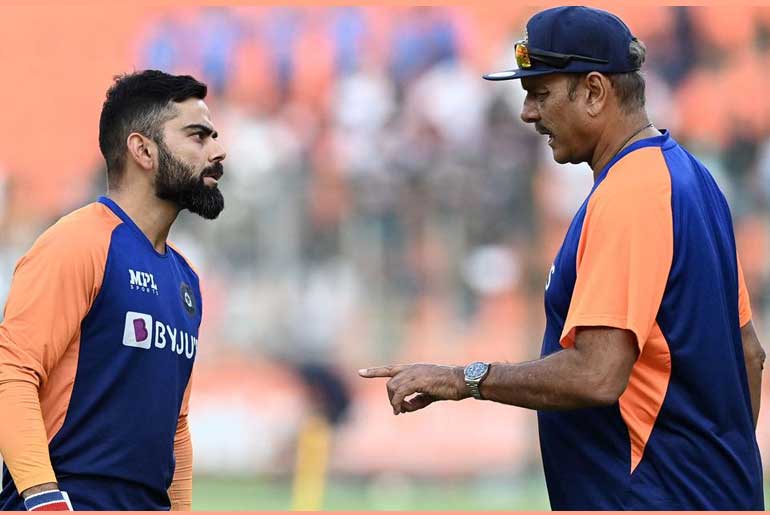In October 2014, Virat Kohli was experiencing a challenging phase in his cricket career. Still recovering from the struggles faced during the Test series in England earlier that year, he hadn’t scored a century since February. His form was further deteriorating, with eight consecutive innings without a half-century. During a match against West Indies, an unexpected move saw Ambati Rayudu walk in at No. 4 after Shikhar Dhawan’s dismissal, leaving fans perplexed. Kohli eventually came to the crease later in the game, prompting questions about his batting position with the impending 2015 World Cup.
Fast forward to 2023, where former India coach Ravi Shastri is suggesting that, with less than two months remaining until the World Cup, Kohli should consider batting at No. 4. This proposal has generated discussion due to the uncertainty surrounding India’s No. 4 position. Despite having various options like KL Rahul, Shreyas Iyer, and Suryakumar Yadav, no consistent solution has emerged. Even uncapped player Tilak Varma is now being considered due to his impressive T20 performances. However, while the suggestion to move Kohli to No. 4 is appealing, it’s also a contentious idea that the Indian team should likely avoid.
Shastri’s idea echoes the situation in 2007, but the circumstances are vastly different now. In 2019, with Rohit Sharma and Shikhar Dhawan in strong form, Kohli had an opportunity to anchor the middle order. However, in 2023, the team lacks stability, with Dhawan and Dhoni retired, Rohit in the final stages of his career, and Pant injured. Additionally, Hardik Pandya’s batting reliability has waned, while Iyer and Rahul have faced limited international exposure. Given this scenario, Kohli’s current form and skill are invaluable at the top of the order.
While Kohli’s No. 4 batting statistics are impressive, his overall record at No. 3 is significantly more substantial, with 210 innings compared to just 39 at No. 4. Moreover, his success earlier at No. 4 was during a time when India’s top 3 consisted of Tendulkar, Sehwag, and Gambhir. Today, his legacy is such that he can excel in any position. However, concerns arise about his relatively confined approach at No. 4. Kohli thrives with his aggressive and uninhibited style, which may be less effective when he’s required to respond to existing match dynamics rather than dictate them.
If Kohli were to move to No. 4, either Shubman Gill or Rohit Sharma would need to step into the No. 3 role, potentially creating another problem in the batting order. This trade-off could disrupt the current balance within the team. In the past, despite Kohli’s success at No. 4, he acknowledged that No. 3 was his preferred position. Attempting to solve one problem might generate another, so a more measured approach is advisable.
Ultimately, while Kohli is undoubtedly capable of adapting to any position, considering his impact and the current team dynamics, it’s probably wiser for him to remain at No. 3. The Indian team’s priority should be to ensure that their best player faces the maximum number of deliveries, allowing him to utilize his skills effectively. In the midst of preparations for the World Cup, a thoughtful and pragmatic strategy is essential for India’s success.
Disclaimer:
The information contained in this article is for educational and informational purposes only and is not intended as a health advice. We would ask you to consult a qualified professional or medical expert to gain additional knowledge before you choose to consume any product or perform any exercise.







